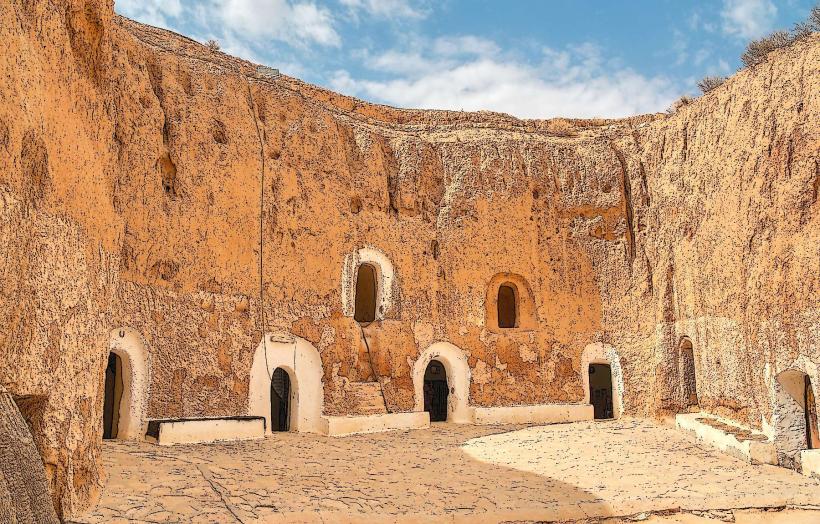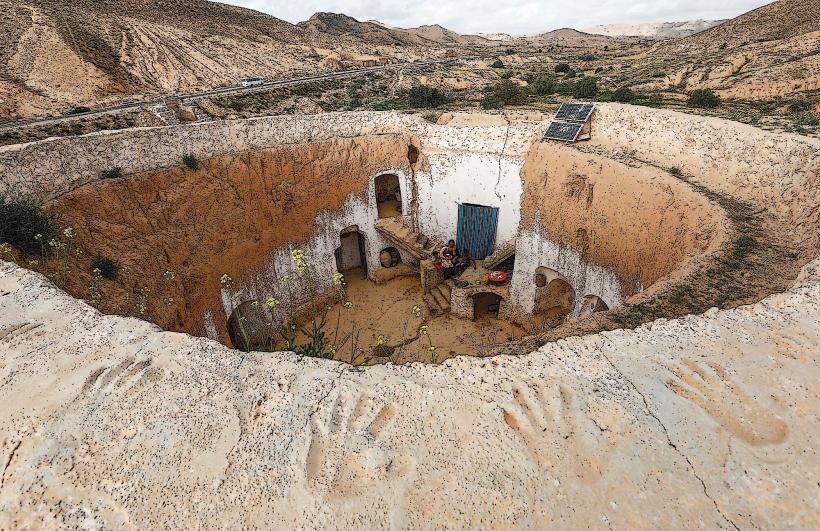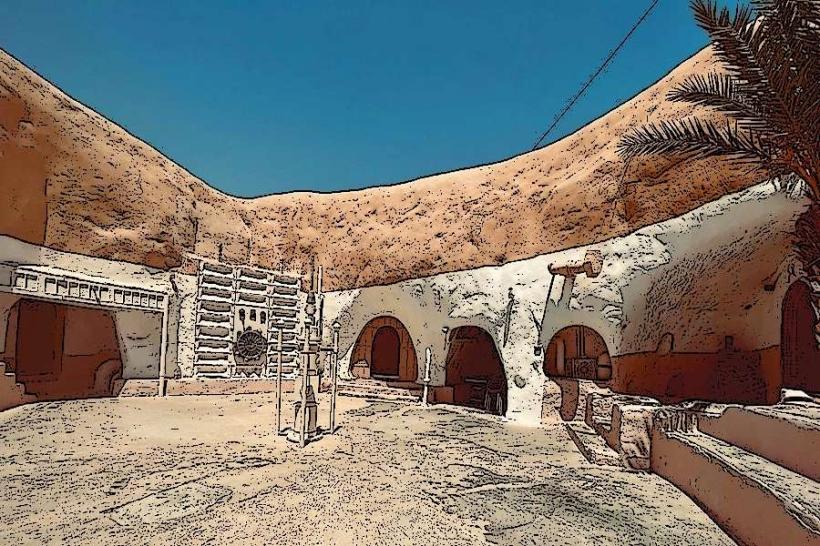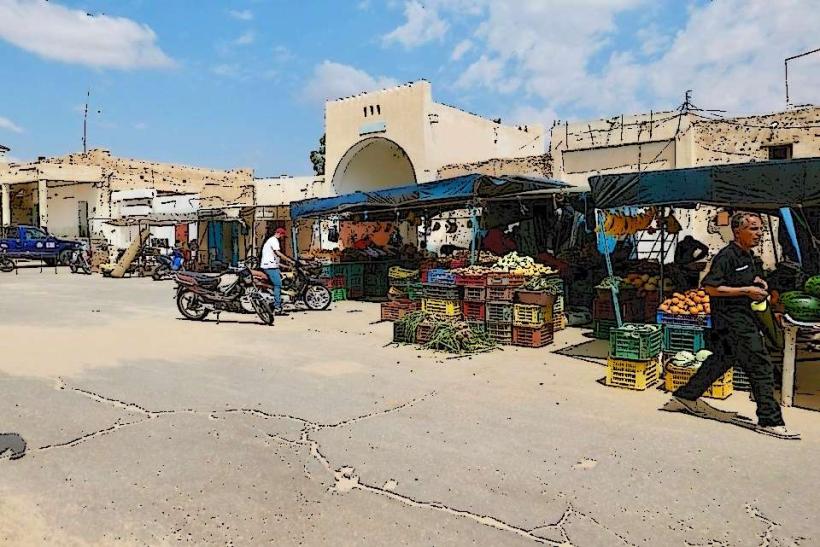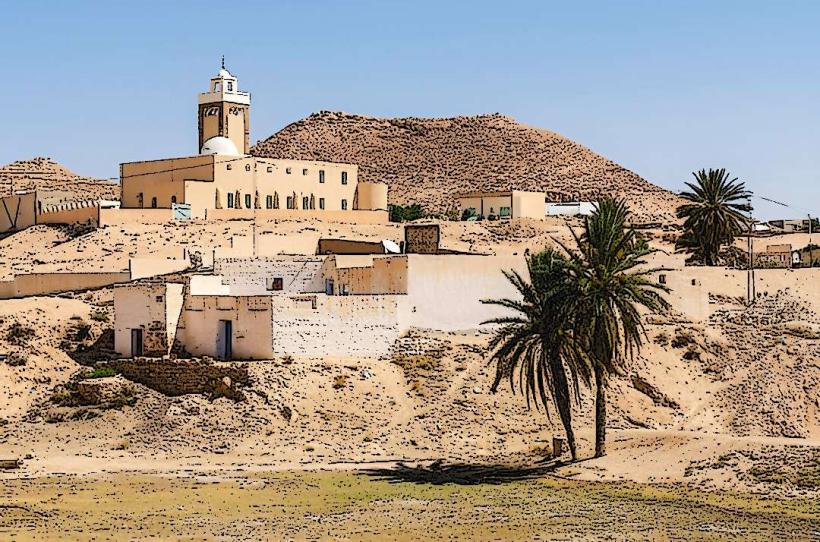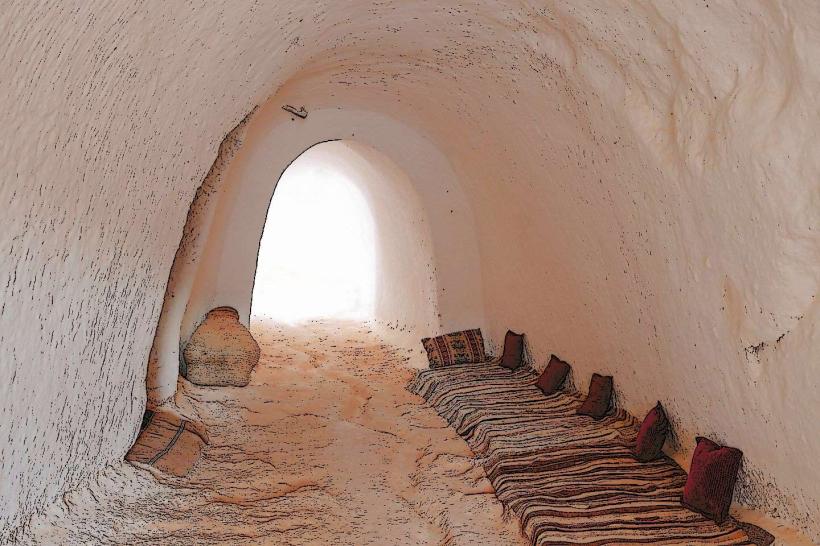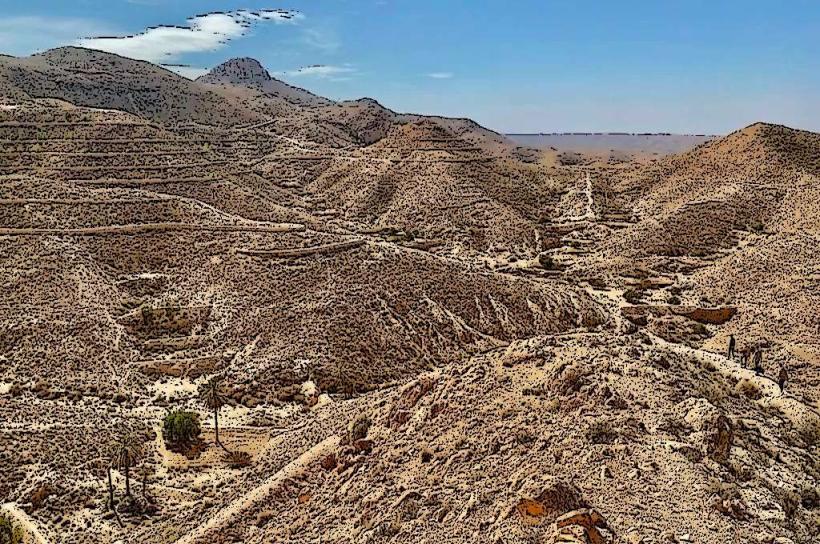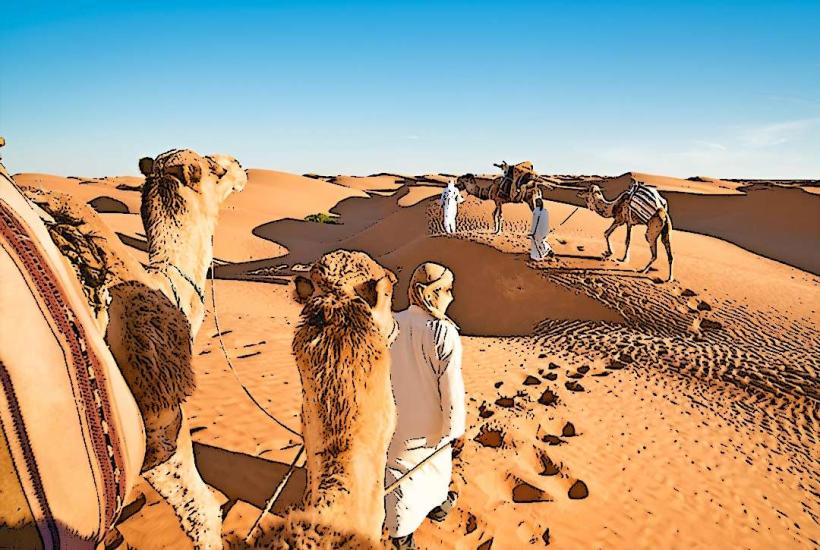Information
City: MatmataCountry: Tunisia
Continent: Africa
Matmata, Tunisia, Africa
Overview
In southern Tunisia, Matmata is a tiny town known for its underground Troglodyte Homes-rooms cut straight into the cool, packed earth, in addition matmata lies in the Gabès Governorate, roughly 35 kilometers southwest of the seaside town of Gabès, perched at the edge of the dry Dahar Plateau where scrubby hills give way to the open sands of the Sahara.In Tunisia, it’s one of the most iconic spots, where Berber traditions still thrive, desert life has shaped every corner, and mud-brick walls glow warmly in the sun, alternatively matmata sits ringed by jagged hills, dry sunbaked slopes, and deep, shadowy wadis.This area lies in the Matmata Mountains, a rugged subrange of the Dhahar highlands where the wind smells faintly of dry stone, consequently the climate is scorching and dry, with blistering summers, sharp crisp in winter, and barely enough rain to darken the dust.In a way, In the desert, the heat soars under the midday sun but drops sharply once night falls, in conjunction with natural adaptation shows in every corner of the town, where blistering heat drove people to carve cool, shadowy homes deep underground.Troglodyte houses are pit-style homes: a wide central courtyard is carved deep into the earth, with rooms tunnelled sideways into the cool, solid rock surrounding it, in addition the design shields residents from the sweltering summer sun and keeps out the biting winter chill.From above, many houses vanish from sight, leaving the land pale and pitted like the surface of the moon, on top of that you usually get in through a narrow tunnel or by walking up a ramp from the ground, the air cool and a bit damp as you step inside.Each piece is built by hand, using age-ancient techniques passed from parent to child, the smell of fresh-cut wood lingering in the air, not only that a few houses have stood for more than a hundred years, and people still live inside, their wooden floors creaking under every step.Frankly, Modern adaptation: Some locals have moved into houses above ground, but many timeworn homes remain-kept up or refitted for visitors, their stone walls cool even in midday heat, after that matmata, a Berber (Amazigh) town, carries centuries of tradition in its language, clothing, music, and the distinctive earth-dug homes that keep interiors cool under the midday sun.Oral history says the community slipped beneath the earth centuries ago, seeking refuge from Arab invasions, roaming raiders, or blistering heat, at the same time matmata stayed off the map until the 1960s, when heavy floods sent residents rushing for help and brought national eyes to their sun-baked, cave-like homes.Matmata shot to worldwide fame as the backdrop for Luke Skywalker’s home in the 1977 Star Wars, its sunbaked, cave-like houses etched into fans’ memories, simultaneously the house from the film now serves as the Hotel Sidi Driss, a working troglodyte inn with cool, cave-like rooms, a little Economy – Agriculture: Even in the harsh, sun-baked landscape, locals dry-farm olives, figs, and almonds, relying on time-worn methods to stretch every drop of water, after that in the nearby hills and valleys, people raise goats, sheep, and camels, their bells tinkling in the morning air, slightly often Tourism is one of today’s main economic pillars, drawing crowds to buzzing streets and sunlit beaches alike, meanwhile people stop by to wander through traditional homes, their wooden floors creaking softly underfoot, almost Book a night in a cave hotel, where cool stone walls keep the air fresh and quiet, also savor the rhythm of Berber drums, taste spiced couscous, and feel the warm desert wind on your face.As far as I can tell, Locals craft woven rugs, shape clay into pottery, and design gleaming jewelry, selling their work to tourists or at bustling regional markets, while in this community, life centers on the extended family, with many homes sheltering grandparents, parents, and children under one roof.Close family ties run deep, and warm hospitality sits at the heart of it all-like a shared meal around a crowded table, while in the daily routine, mornings buzz with energy and evenings stay lively, but the midday heat makes everything gradual, like air thick with sunlight.Traditional roles still hold, but they’re shifting as city life seeps in-sparkling lights, crowded streets, and all, subsequently some elders still wrap themselves in traditional Berber robes, the fabric soft and sun-faded, while younger locals choose sleek, modern clothes, a little In the chilly months, people bundle up in headscarves, cloaks, and thick woolen robes, their breath curling white in the air, therefore people here speak a local Berber dialect, and you’ll also hear the warm, lilting tones of Tunisian Arabic in the markets.Music, poetry, and the telling of aged stories keep Berber culture alive, from the beat of a hand drum to the rhythm of spoken verse, to boot in Matmata, you’ll find tiny shops with dusty shelves, a couple of cafes, a school, a health clinic, and even a modest police post.When they need bigger services, residents head to Gabès, where the streets hum with market chatter, then you can get there easily by road, with shared taxis rumbling past olive groves and buses running to nearby towns like Gabès, Tamezret, and Medenine.Electricity and Water: These days, most homes have power-you flip a switch, and the lights glow instantly, moreover in dry spells, people pump water from wells or get it hauled in by truck, the tanks sloshing as they arrive.Just up the hill lies Tamezret, a Berber village with sun‑bleached stone houses, a miniature museum, and artisans weaving traditional crafts, on top of that toujane is a charming Berber village, surrounded by rugged hills and known for its vibrant handwoven rugs.Matmata sits on the road to the Sahara, a stop that often slips into desert tour itineraries, connecting travelers to Douz, Tataouine, or the palm-dotted oasis of Ksar Ghilane, consequently timeless and still, Matmata feels cut off from the present-peaceful, hidden away, and steeped in the languid, ancient pulse of desert life, where the air carries a faint scent of dust and sun-warmed stone.Pride in Heritage: The community treasures its distinct identity and takes pride in how it’s weathered hardship, adapting with the grit of people who’ve learned to coax life from rocky soil, after that blending antique with innovative, you’ll spot TV antennas jutting from rooftops and mobiles in hand, yet many locals still sleep in cool cave homes and keep to their age‑ancient traditions, in some ways Frankly, In the end, Matmata isn’t merely a strange site to visit-it’s a vivid testament to Berber ingenuity and the grit it takes to survive in the desert’s dry, sun-baked heat, besides its sunken homes, ancient traditions, and sweeping cliffs tell the story of a life shaped-and softened-by nature’s fiercest moods.Tourism may be on the rise, but Matmata still holds onto its soul, giving visitors a close, almost tactile glimpse of one of Tunisia’s most striking cultural landscapes.
Author: Tourist Landmarks
Date: 2025-10-29
Landmarks in matmata

